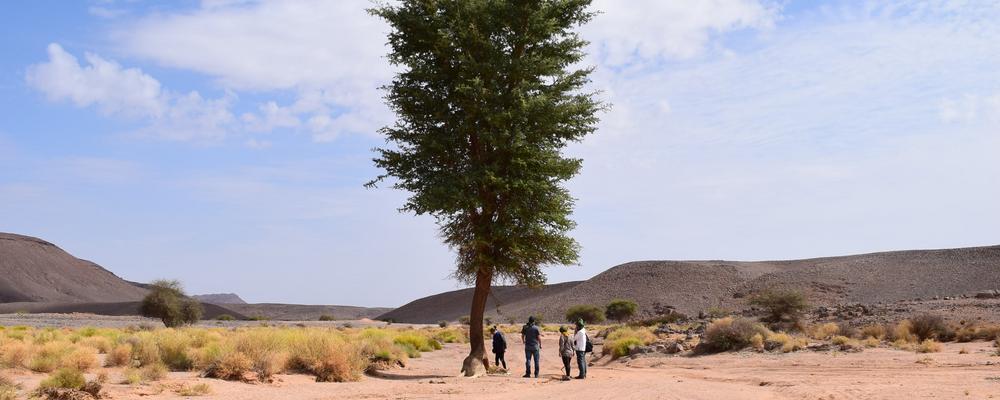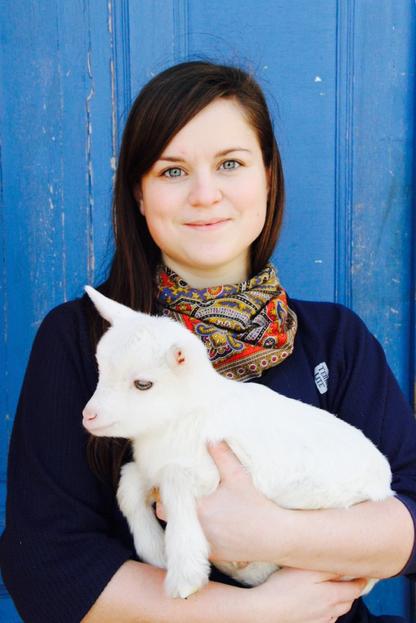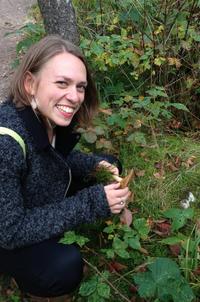
Student projects
At the GGBC there is a lot of interesting reserach going on, both at our academic partners as well as our public ones. Some projects are collaborations between both and provide a great opportunity for exciting degree projects on both bachelor and master's level. Check out the list below for previous student projects at the GGBC to get inspired and contact us if you would like to do a degree project on biodiversity!
Recently finished PhD projects
Bridging the past to the present: investigating species boundaries with herbarium specimens and next-generation-sequencing. A case study of circumpolar Silene sect. Physolychnis
Quatela, Anne-Sophie, Dec 01, 2023
Phylogenetic Relationships, Biogeography and Species Delimitation: A case study on southern African Silene (Caryophyllaceae)
Moiloa, Ntwai, Oct 19, 2023
Climate-associated human health effects
Chen Tzu Tung, Sep 15, 2023
Nutrient Transfer in Aquaponic Systems – Optimizing microbial processes for greater circularity and economic viability
Lobanov Victor, Jun 05, 2023
Modelling the Evolution of Species’ Ranges
Eriksson Martin, Oct 14, 2022
Thermal plasticity and limitations in tropical trees
Wittemann Maria, Sep 30, 2022
Hidden in the Genomic Maze: The Detection, Capture and Application of low-copy nuclear genes in the giant genomes of Aloe vera and relatives.
Yannick Woudstra, Nov 23, 2021
Etude taxonomique et biogéographique de quelques espèces du genre Silene L. (Caryophyllacées) en Algérie
Melilia Mesbah, Sep 14, 2021
Macroevolutionary patterns of neotropical psittacines associated with the new open habitats that emerged during the Andean orogenesis
Miriam Ramírez Herranz, Jan 22, 2021
Advancing Evolutionary Biology: Genomics, Bayesian Statistics, and Machine Learning
Tobias Andermann, Dec 18, 2020
Towards data-driven biodiversity conservation in Africa
Harith Farooq, Dec 17, 2020
Taxonomy and Systematics of Thelephorales - Glimpses Into its Hidden Hyperdiversity
Sten Svantesson, Nov 20, 2020
Origin, evolution and biodiversity of the Neotropical herpetofauna : patterns and processes of the world's richest and most threatened biota
Josué Anderson Rêgo Azevedo, Oct 18, 2019
Assessing biodiversity : beyond the taxonomic impediment
Camila Duarte Ritter, Sep 07, 2019
Heathlands – a lost world?
Mattias Lindholm, May 24, 2019
Big data insights into the distribution and evolution of tropical diversity
Alexander Zizka, Apr 27, 2018
Previous MSc projects
Business & Biodiversity – How businesses understand and work with biodiversity
Andréasson Hanna, Aug 30, 2023
African elephants' effect on the temporal use of elephant highway by predator and prey. Makgadikgadi Pans National Park.
Relfsson Rebecka, Aug 18, 2023
Investigating the use of olfactory cues to re-direct African savannah elephant pathways. A potential conflict mitigation tool.
Ruijs Vera, Jun 30, 2023
Estimating historic ranges of extinct scavenging birds from North America during the late Pleistocene using co-occurrence data from the fossil record
Miranda Melissa, Jun 30, 2023
Systematics and the evolution of flower symmetry of Posoqueria (Rubiaceae)
Giraldo Gómez Sebastián, Jun 14, 2023
Decreases over time in Shannon diversity of land snails
Hemming Jens, Feb 15, 2023
Holocene vegetation change and its correlates in fennoscandia
Infanger Raphaela, Oct 21, 2022
Species delimitation in Genipa (Rubiaceae) using integrative taxonomy
Ridley Rhonda, Aug 29, 2022
Animal welfare in a social life cycle assessment – A contribution to more holistic sustainability assessments (2021)
Environmental sustainability and animal welfare in animal production systems has increasingly raised concern among e.g. the public, politics and research. However, in sustainability assessments of animal production systems, animal welfare is rarely taken into consideration.
A literature review was conducted to investigate how animal welfare aspects could be incorporated into a social life cycle assessment. The result of the literature review was applied to a case study to compare the animal welfare impact in Swedish and Danish conventional pig production.
Read the study here and find more information and contact details here.
Frida Edman, MSc in Environmental Science
Supervisors: Søren Faurby (BioEnv, UGOT) and Serina Ahlgren (RISE)

Does fruit colour affect the geographical distribution of palms (2020)
Different fruit colours attract different types of feeding animals with different ability to spread the seeds. Here we investigated if palms with fruit colour that mainly attract more mobile animals have a larger geographical spread.
Adrian Hill, MSc in Biology
Supervisor: Christine Bacon, GU

Relative impact of individual on global biodiversity loss (2020)
In this project I am examining supply chain data to determine what products we in Europe buy that have the biggest impact on biodiversity loss in hotspots, using land use as a proxy.
Louisa Durkin, MSc in Biology
Supervisors: Allison Perrigo GU, Alexandre Antonelli GU, Kew Gardens, Kimberly Nicholas LU

Effects of habitat fragmentation on conservation efforts of two threatened plant species, Eryngium maritimum and Mertensia maritima (2019)
The thesis is intended to support conservation efforts of the Swedish Environmental Protection Agency (Naturvårdsverket) by examining the impact of habitat fragmentation on the fitness of Eryngium maritimum and Mertensia maritima. In order to investigate the potential effects of inbreeding depression on the declines of populations, cross-pollinations were done on plants of both species. The project was done in cooperation with the Gothenburg Botanical Garden and Länsstyrelsen in Gothenburg and on the Koster Islands.
Hanna Schork, MSc in Biology
Supervisors: Mats Havström and Mari Källersjö, Botaniska

Is prey defaunation a potential cause of carnivore range loss and eventual extinction? (2018)
Defaunation has been emphasized as a likely threat to the conservation of carnivores, however not much is known. A new diet database was generated in collaboration with Owen Middleton for the terrestrial members of the order Carnivora having mammals as a primary prey item, resulting in 20170 diet records collected from 566 published literature sources. To estimate the potential threat to carnivores from the loss of their prey, overlap range maps of predator and their primary and secondary prey species were created and these were compared to maps where prey species classified as vulnerable or worse by the IUCN were removed.
Hanna Svensson, MSc in biology
Supervisor: Sören Faurby, GU

Applications of next-generation sequencing data for a population genomics study of Lesser whitethroats (2019)
The project attempts to shed light on the taxonomical conundrum that is the Lesser Whitethroat (Sylvia curruca) species complex, by employing whole-genome sequencing data, especially focusing on single-nucleotide polymorphisms (SNP). The thesis serves as a foundation for further studies of the relationships between different Lesser Whitethroat taxa.
Laima Bagdonaite, MSc in Biology
Supervisor: Urban Olsson GU

Interested in doing a degree project in Biodiversity?
Contact info@ggbc.gu.se for a list of current BSc and MSc projects available with the GGBC

